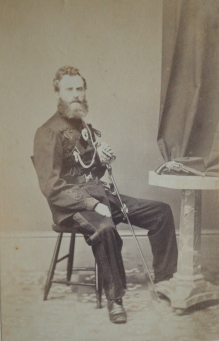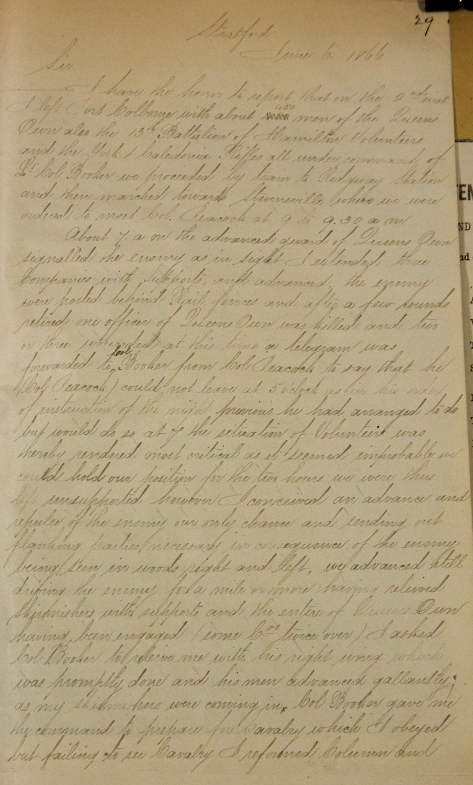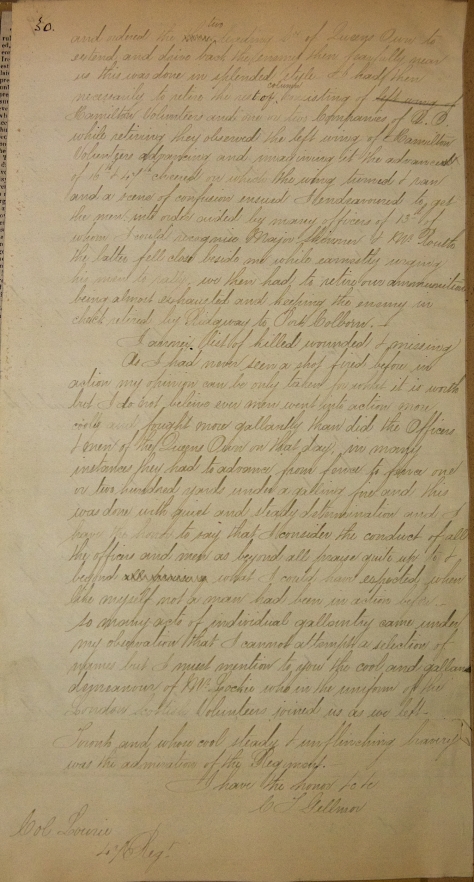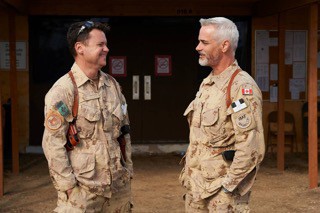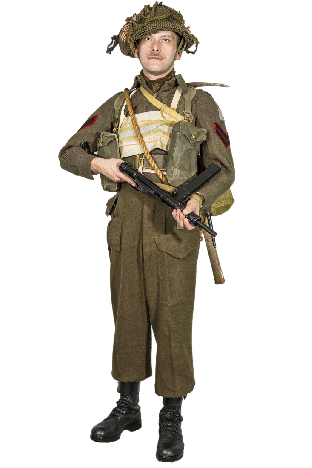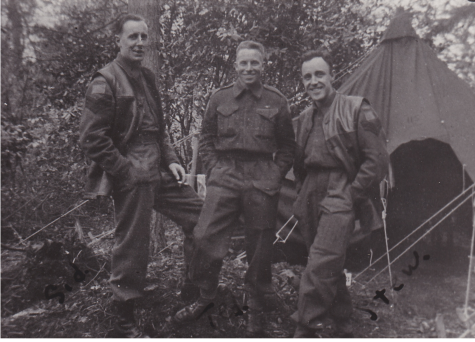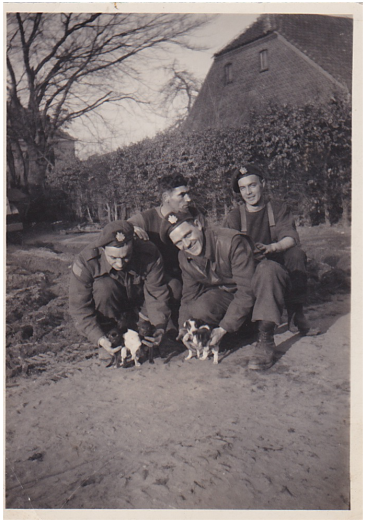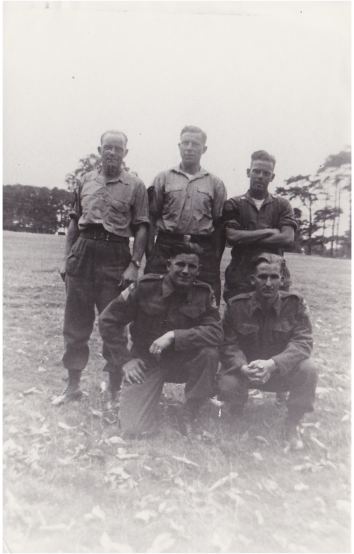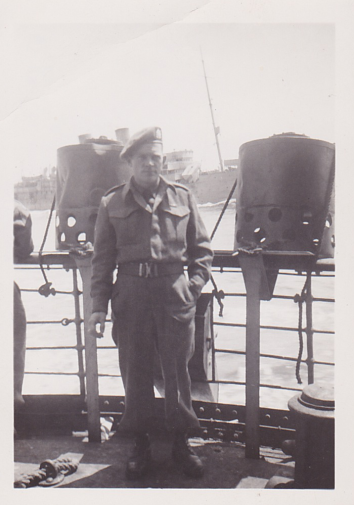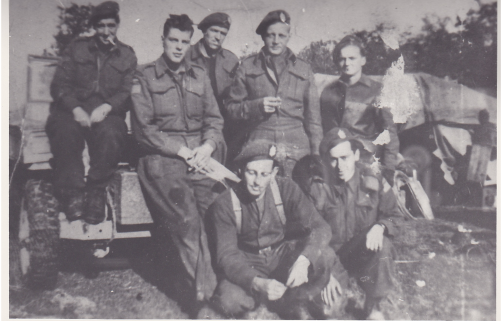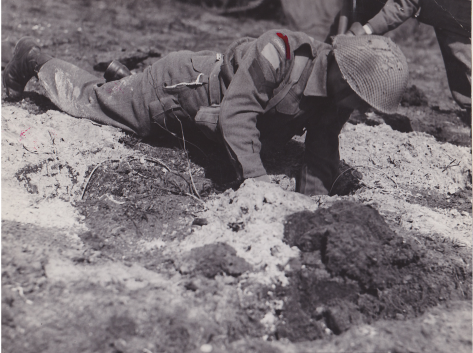The following article was written by Anthony Partington in June 2015 for the London Scottish regimental news and we are pleased to repost it here with his permission as we anticipate the 150th Anniversary of the Battle of Ridgeway. {Photo above No. 10 Highland Company after Battle of Ridgeway]
The Battle of Ridgeway, June 2 1866, was probably the first battle fought entirely by members of the Volunteer Movement in either Britain or Canada. It was also the last battle fought in Canada against a foreign invader. For the London Scottish Regiment, and long forgotten, the battle was the first time that our uniform was worn in action.
Lady Elcho, speaking in the Fall 1866 prize-giving, said: “It is with no small pride that we, this year, heard of one who had served in the ranks of the London Scottish having greatly distinguished himself by his enthusiasm and steadiness in the field against the Fenians in Canada. This refers to Colour-Sergeant Lockie, of No. 8 Company, who went into action in the uniform of the London Scottish, which thus came under fire for the first time.”
Thomas E. Lockie, – a Volunteer from the London Scottish
In June 1866, the Governor General presented to both houses of the Legislature the Adjutant-General of Militia in Canada’s report on the state of the Volunteer system in the Province of Canada (note Confederation was yet to come in 1867). It makes special note of the presence of young Thomas Lockie who fought in the Battle of Ridgeway (also known as Lime Ridge) with the true martial spirit of the British and Canadian Volunteer Movement.
“It would be impossible to detail the many individual instances of devotion to Canada which have been afforded by her sons; but the behavior of a stranger not long arrived in the country from England should not be left without notice. Mr. Lockie, a young gentleman of the London Scottish (Lord Elcho’s Regiment), who had distinguished himself at Wimbledon, came to Canada 18 months ago. When the Fenians landed at Fort Erie he had only been a few weeks returned from England with a young bride. He immediately fell into the ranks of the Queen’s Own as a private, and fought at the Battle of Lime Ridge, where the grey colour of his uniform, that of the London Scottish, exposed him particularly to the fire of the enemy. His coolness and bravery were conspicuous, and during the retreat he was always seen in the rear, encouraging his comrades and leading and firing with as much deliberation as if on a field day.”
Col. Garnet Wolseley, Deputy Adjutant-General of Militia in Canada, had arrived on the battlefield on June 3 and took command of the British forces in the area. In all probability, it was he who placed the glowing praise of Mr. Lockie in the Addenda to the Militia Report. Wolseley had served in the 84th Regiment in the Indian Mutiny with Lord Elcho’s brother-in-law Major Augustus H.A. Anson V.C., M.P. They were both best friends with Lord Elcho. Their reports back to Lord Elcho of the unsuitability of scarlet, blue and green uniforms in a modern battle probably sensitized Wolseley to the presence of the Hodden Grey on the battlefield.
There is a photo of No 10 Company taken at Stratford where the British and Canadian forces regrouped after the battle under the command of Col. Wolseley. The muster roll shows three official Volunteers in the company, including Lockie, discharged from strength by June 6. He could be the man in the photo as it would be of those who had fought. Of note is how the civilian dress in grey of the one Volunteer stands out against the rifle green tunics and Black Watch tartan trews of the Highland Company supporting the comment in the Adjutant-General’s report. The Hodden Grey uniform of the London Scottish would have been similar.
Thomas Eman Lockie was born 6 January 1838 in Kelso, Roxburghshire to Andrew Lockie, a wealthy farmer with 800 acres of arable land and 100 acres of grass employing 13 men, 8 women and 3 boys. Thomas spent his formative years in a boarding school and, by 1861, he was a merchantile clerk living in Lambeth. Lockie was noted as being a Colour-Sergeant of No. 8 Company, under Captain Macgregor in March 1862. He arrived in Canada in late 1864 or early 1865 but returned to England to marry Janet Eman in Lambeth in the first quarter of 1866 (curiously a woman with the same surname as his mother and most likely his cousin). Within a matter of weeks, Lockie and his bride made the long voyage back to Canada and a new life in Toronto. Despite his young age, he had both strong qualifications and good connections as, in short order, he became the secretary for the newly founded Toronto Steel, Iron and Railway Works. The young couple’s domestic tranquility, however, was short-lived and within a few days of arriving back, Lockie was volunteering to fight the Fenians.
Serving as a Private in the Queen’s Own Rifles, Lockie fought at the Battle of Ridgeway on June 2 1866 near Fort Erie in the Niagara peninsula. He survived the battle but just over a year later, he died of liver failure, a disease contracted during his military service. His fate and his connection to the London Scottish were again duly reported in local and national newspapers and by the QOR.
The Globe of Oct 21, 1867 stated:
“ DEATH OF A VOLUNTEER- Mr T. E. Lockie, a member of the Highland Company of the Queen’s Own Rifles, died in this city on Saturday, and will be buried today with military honours. The deceased prior to his arrival in this country, was a member of the London Scottish Regiment of Volunteers, and, during his connection with the Queen’s Own, experienced all the hardships of their Fort Erie campaign, and there contracted a disease which accelerated his death. At the Battle of Ridgeway, he appeared in the grey kilt and hose of his former regiment, and at the retreat his conduct was marked by bravery. After the fight, the behavior of the peculiarly-dressed individual, as he was styled, elicited the admiration of even the Fenians, he, while the retreat was going on, having remained so far behind as to be under the fire of both sides, while his cool and collected behavior during the engagement was a source of encouragement to his comrades-in-arms. He was secretary of the Toronto Steel and Iron Works since the opening of that establishment, and conducted himself there to the satisfaction of his employer.”
The Globe of Oct 22, 1867 stated:
“VOLUNTEER FUNERAL- The funeral of the late Corporal Lockie, of the Highland Company, Queen’s Own Rifles, took place from the residence of the deceased to the Necropolis yesterday afternoon. The deceased was buried with full military honours. A firing party from the company to which the deceased belonged, headed the funeral cortege and immediately in rear was the regimental band of the battalion, the hearse, a number of the volunteer force, and friends of the deceased in carriages, bringing up the rear. On their arrival at the ground, a volley was fired over the grave by his comrades, and the earth closed over a volunteer whose record in our force was honourable, and whose memory deserves to be warmly cherished.”
“Aperture Sight”, the columnist in the Volunteer Review and Military and Naval Gazette of October 28 credits both reports above originally to Lt. Col. Gillmor, O.C. the QOR. As an aside to the battle report, many southern Fenians wore their ex-Confederate States’ grey uniforms with green facings in the battle, which was why friendly forces would shoot at Lockie.
Curiously, Lockie lies in an unmarked grave [K127] belonging to John Lang Blaikie, along with two of Blaikie’s infant children, in the Toronto Necropolis. Both Blaikie and Janet Eman Lockie were Executors of Lockie’s will and estate in Canada. These facts suggest both Executors did not do justice to this man, considering that he left an estate worth $4,078, and probably some collusion. Blaikie was a wealthy and prominent Toronto stockbroker and businessman; a man who, like Lockie, had immigrated to Canada from the small Scottish shire of Roxburgh. While the connection between Blaikie and Lockie is not clear, one may assume that Blaikie had known Lockie’s family in Scotland and had most likely mentored the young Lockie on his arrival in Toronto into the Toronto Steel, Iron and Railway Works and managed his investments.
Eight months later, the Department of Militia and Defence in Ottawa also recognized Lockie’s contributions. There is a post in the Canada Gazette on June 1, 1868 noting that Thomas E. Lockie, “Queen’s Own Rifles, died of disease contracted at the Battle of Ridgeway” and that his widow had been awarded a gratuity of $200.
What had started out with such promise ended in the bitter loss of a brave and promising young man so soon after his moment of glory.
The 1866 Fenian Raid
For a young man with military experience, Thomas E Lockie’s arrival in Canada was opportune. With the conclusion of the American Civil War, the Fenian Society decided to organize disbanded Irish soldiers from both the Union and Confederate Armies into Volunteer units for the invasion of Canada. The intent was to secure a piece of Canada by force that could be traded for the freedom of Ireland. Some 1500 Fenian troops crossed the Niagara River north of Fort Erie with many more waiting to cross. The campaign was the first to be fought under the flag and title “Irish Republican Army”.
The British forces mobilized to fight this Fenian incursion were split into two. Included in the northern force were elements of the 16th and 47th Foot of British Infantry, a battery of Royal Artillery, along with local companies of Volunteer Militia from the Niagara area. Their objective was to protect the railway routes north to Niagara Falls and the only bridge to the USA and west towards the Welland Canal. The southern force, consisting of the Queen’s Own Rifles of Toronto (QOR), the 13th Battalion Canadian Volunteer Militia (later The Royal Hamilton Light Infantry), the Caledonia and York companies of Militia, the Dunnville Naval Brigade, the Welland Canal Field Artillery Battery (with no field guns), were to protect the railway line leading west to Port Colborne and the southern entrance to the Welland Canal.
Despite a massive call-out in March 1866, preparations were inadequate for an attack.
Ammunition ration for target practice was limited and few Militiamen had ever fired their rifles. The Militia units had no knapsacks or water bottles to campaign with. This wasn’t as obvious a problem until the QOR went into battle unfed, with no water and only 20 rounds of ammunition –sufficient for about seven minutes of heavy fire! No fear – they proposed to bayonet the Fenians, a tactic almost unheard of in the American Civil War. Many soldiers drank ditch water because of the lack of water bottles and possibly this was the reason for Lockie’s disease. The March call-out had been a ‘cry wolf’- nothing had happened and nothing was done to correct deficiencies. Many small businessmen and students suffered commercially and time-wise such that many did not report for the June call-out. The shortfalls allowed Thomas Lockie an opportunity to serve as a trained soldier.
The Fenian intelligence was excellent. They knew that the northern force was mainly British regular soldiers while the southern force was untried Canadian Militia. They chose to attack the 841 Militia at Ridgeway first, then the British regulars. The ill-equipped and relatively untrained Militia troops attacked aggressively. A ‘cavalry’ alarm caused the Canadians to form square (a Napoleonic War tactic still in the British Drill Book) in front of trained American infantry, resulting in many fatalities and injuries. Nine men died that day from the QOR with others in the weeks following. Perversely, the error in command probably saved lives since the QOR and the 13th Battalion were just about to engage the Fenian main force with insufficient ammunition. The experienced and well-supplied Fenians would have cut them to pieces. The battle at Ridgeway was a tactical defeat for the Canadians, yet a strategic victory, since the Fenians withdrew back to the USA the next day after the US Government cut off reinforcements and supplies to the Fenians.
The Canadian Volunteer Militia
The Volunteer Movement in England produced many fine battalions including The London Scottish Volunteer Rifles and also influenced the creation of many Volunteer regiments in Canada that in time became the majority of the Canadian Army. Many were called out in March and June 1866 and at other times up to 1870 in response to the three-pronged planned Fenian attack. The western attack from Detroit never happened. The eastern attack into Quebec was effectively a police action while the central attack through Fort Erie was an actual battle involving the Queen’s Own Rifles.
The 2nd Battalion, Volunteer Militia Rifles of Canada was formed April 26, 1860 in Upper Canada from four independent rifle companies in Toronto and a company each from Barrie and Whitby. The ‘Queen’s Own Rifles of Toronto’ title was given in March 1863 when they became part of the Service Militia of Canada with a role as a fighting force in contrast to the remainder of the Volunteer companies that acted generally as military police / Frontier Constabulary. The impetus in Upper and Lower Canada was the American Civil War with numerous small raids by Union or Confederate forces across the border and the desire by Britain to withdraw the remaining regular regiments. By 1866, the QOR consisted of 10 companies solely from Toronto including No. 10 (Highland) Company. The Highland Societies of Toronto formed the Highland Company in 1860, similar to the foundation of the London Scottish, but disbanded it in 1868. Later the Highland Societies raised the 48th Highlanders of Toronto in 1891.
The 48th Highlanders contained a number of expatriate London Scots who corresponded with the London Scottish Gazette for many years and who were known to Lt. (later Captain) Colin C. Harbottle. Lt. Col. CC Harbottle later commanded the 75th Battalion in WW1 and The Toronto Scottish Regiment after the war. The London Scottish Regiment has deep and abiding connections with Canada and now one more can be added to the roster – the story of Thomas E. Lockie, the first to wear the regimental uniform in battle.
Strike Sure and Carry On
Anthony Partington
